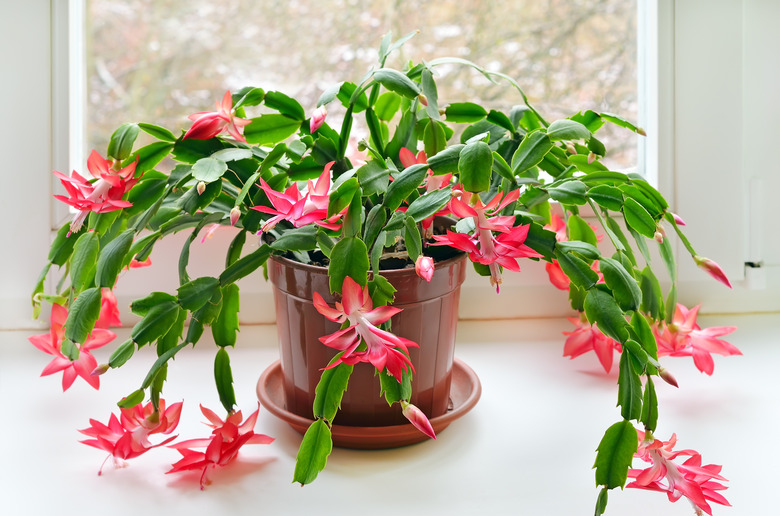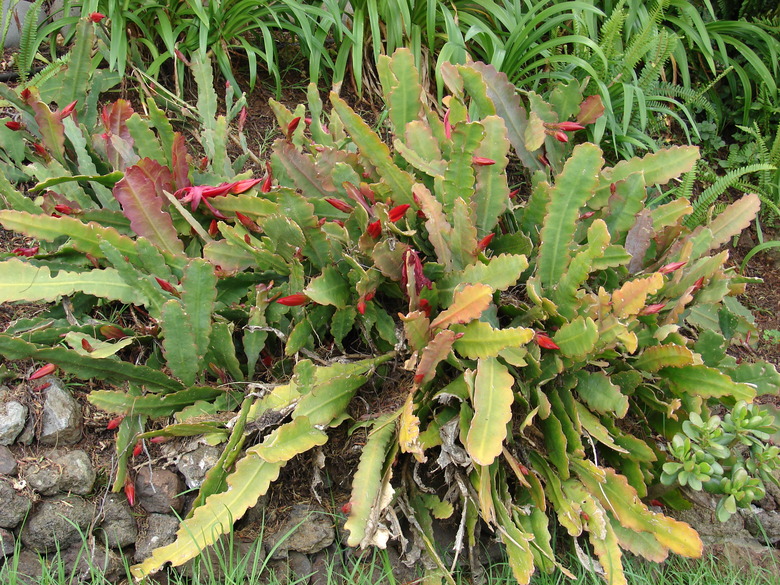How To Care For A Zygo Cactus
Zygocactus is the former genus name of an epiphytic succulent plant native to the Brazilian rainforests. This plant has since been renamed and reclassified as Schlumbergera truncata. Plants typically are sold as houseplants around Thanksgiving and Christmas, because that's when they burst into bloom and earn one of their common names, "holiday cactus."
Although it's a true cactus, it's a tropical cactus species and cannot prosper under the same care and conditions as a desert cactus species.
Zygo Cactus and Related Species
Zygo cactus plants are often referred to as "Christmas cactus," although they're actually "Thanksgiving cactus" plants. The reason for the confusion primarily is a marketing/advertising decision. Because this species begins blooming at the end of November, it's in stores in full bloom just before Christmas, which makes it desirable for shoppers.
The "true" Christmas cactus is another species, Schlumbergera x buckleyi, which blooms just a little later than Thanksgiving, in late December through January. Because it's not in peak bloom for Christmas sales, this is why the Thanksgiving cactus is marketed as Christmas cactus.
Both these species are hardy in USDA plant hardiness zones 10 through 12, and both require the same care. An easy way to differentiate between the two is by looking a the flattened stem segments, called cladophylls.
Zygo/Thanksgiving cactus is also called "crab cactus" because of the claw-like appendages on the stems, while Christmas cactus has rounded stem appendages. Zygo cactus may have cream, pink, red, purple, orange or bicolor blooms, depending on the cultivar.
Growing Zygo Cactus
In their native habitat, zygo cactus plants are epiphytic, which means that they grow attached to trees rather than to soil. Zygo cactus do not harm or extract nutrients from their host trees, however.
In cultivation, **these cacti grow best on soil that drains well.** A potting mixture that consists of one part potting soil, two parts peat moss and one part perlite is ideal for zygo holiday cactus.
**Zygo cacti are very sensitive to temperature and light.** They need nighttime temperatures between 55 and 65°F to bloom. If nighttime temperatures are above 65°F, these cacti may simply not produce the flowers they are prized for. It is important not to expose zygo cactus plants to temperatures at or above 90°F in the fall as this can lead to bud drop.
Zygo plants will bloom in five to six weeks after buds appear if nighttime temperatures are around 55°F. If temperatures are above 60°F, you will need to make sure the plants spend at least 12 hours a night in total darkness. If you do not have a dark enough room, you can cover the plants with black fabric.
Tip
Nighttime temperatures between 55 and 65°F are required for zygo cactus plants to bloom.
Zygo Cactus Care
With proper care, a zygo holiday cactus can live for many years. Let's go over the needs of these ornamental cacti.
Watering
The water needs of zygo cactus depend on the time of year. During the spring and summer, you can allow the soil to dry between waterings. However, once flower buds appear in the fall, you want to provide consistent moisture. This prevents the buds from falling off the plant.
You want to make sure not to overwater zygo cactus, as this can lead to a condition known as root rot that can kill the plant. Overwatering this plant can also cause flower buds to drop before the blooms can open.
Fertilizing
Holiday cacti respond favorably to fertilizer during the growing season. From June through August, monthly feedings with balanced houseplant fertilizer works well for these species.
Once buds form, switch to a fertilizer that contains a higher amount of potassium and phosphorus than nitrogen to support the growth of flowers.
Repotting
Zygo cacti perform well when they are "root-bound." This means that the roots have no more room to spread out and instead form a dense layer as they encircle the base of the pot.
As a result, zygo cacti only need to be repotted about every three years or so.
References
- UGA Cooperative Extension: Confusion about the Christmas Cactus-They aren't from the desert
- University of Minnesota Extension: Holiday cacti
- Missouri Botanical Garden: Schlumbergera truncata
- Missouri Botanical Garden: Schlumbergera × buckleyi
- North Carolina State Extension: Schlumbergera russelliana
- University of California Agriculture and Natural Resources: Which Holiday Cactus?

